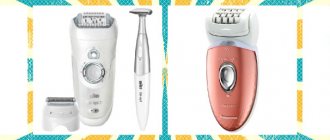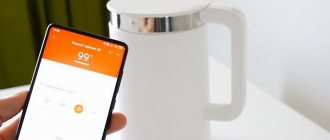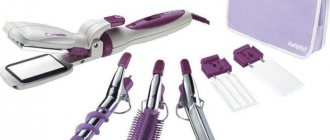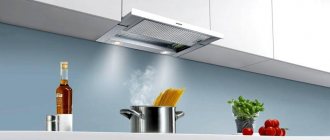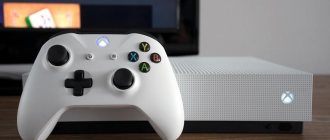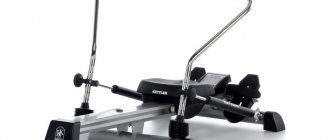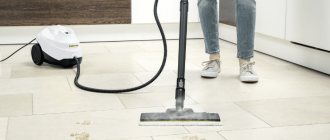Many people are sure that if they peel off the paint from any part of the body, they will have to repaint the entire car. There's really no need for this. If the damage is not too significant, local or spot painting will be sufficient. It allows you to paint even a third of the part. This type of coloring has many advantages.
- Time saving - spot painting requires no more than 6 hours, while full painting takes at least 2 days.
- Reduced cost - since less time and materials are required for coloring, the price of the service falls.
- Exact color matching and absence of visible boundaries between the coating on the damaged and whole areas.
- There is no need to dismantle damaged elements.
The quality of the coating depends on three factors:
- proper preparation of the damaged area for work;
- the experience of the person who will carry out the painting;
- quality of the tool used.
Most often, an airbrush is used for local painting. It turns out that they can not only draw, but also carry out restoration work like this. To understand how to choose an airbrush, you need to determine what it will be used for first.
Features of different types of tools
An airbrush is a compact tool that sprays paint under air pressure. It allows you to apply the coloring material with almost pinpoint precision. Most of all, this tool resembles a fountain pen to which a paint container is attached. The lever of the device closes the air valve. When you press the lever, the valve opens, air passes through the body of the unit, sucks in the coloring material and flies out with it through the nozzle tip.
To choose an airbrush, you should know that according to the interaction of air flow and paint, devices are divided into two types:
- external mixing - mixing occurs outside the body, usually used for painting large areas, their design is as simple as possible;
- internal mixing - paint and air are mixed inside the body, the design is more complex.
There are two types of airbrushes according to the type of control:
- single action - only one of the channels, either air supply or paint, is regulated;
- double action - you can control both channels.
If you are using a dual action airbrush, first open the air supply and only then the paint supply.
This type of tools is divided into two more types:
- dependent action - control occurs automatically; when you press the lever, the air valve opens and then paint is supplied;
- independent action - regulation of air and paint supply is carried out in different ways: when you press the lever, air begins to flow, when it is pulled back, paint begins to flow.
Using an independent airbrush improves control and control over the spraying process. Today, 90% of the market is occupied by instruments of this type. Still, it’s worth trying to work with different types to understand which tool is better to choose.
Airbrushes are classified according to the type of paint supply:
- with bottom feed – paint enters the housing under vacuum pressure;
- with top feed - both vacuum and gravity act on the material;
with the supply of material under pressure - air pressure allows you to displace a larger volume of paint, due to which you can spray materials with increased viscosity.
The placement of the material should not be confused with the location of the paint container. It can be installed from the bottom, top or side. It is better to choose the latter option - it allows you to work even with ceiling surfaces without fear that the paint will spill out.
Popular models
Among the painting units of different types of action, there are the most popular models, which are in demand among beginners and professional airbrush artists.
Wester FPS-20
Pneumatic model for applying high-precision paint coating to various models, cars, snowboards. Suitable for retouching, painting and painting small surfaces.
The airbrush is compatible with compressors with low power. The glass tank is not subject to corrosion and is easy to clean. The transparent tank allows you to monitor the paint level. The package includes two tanks.
Advantages:
- high-quality assembly;
- price;
- availability of adapters;
- low air consumption;
- Ease of use.
Flaws:
- not suitable for fine work.
Reviews
| Nikita Mamaev: | Igor Shumin: |
| “A good airbrush for painting cars, easy to paint, good quality.” | “A convenient and simple device, well assembled, does not release pressure during the drawing process, and can be easily cleaned with solvents.” |
Fubag AGS22/05
A tool that operates using compressed air. The narrow handle allows you to hold the device like a pencil and perform small drawings that require special precision. Replaceable tanks allow you to change paint without interrupting to rinse the container.
Advantages:
- there is a replaceable tank;
- plastic storage case;
- low cost;
- great resource.
Flaws:
- The sealant deteriorates when using paints with aggressive additives;
- fragility;
- plastic case.
Reviews
| Alexey Petrov: | Gennady Kharchenko: |
| “A simple, budget device, suitable for small tasks. Covers various chips and scratches well.” | “Inexpensive aerator for beginners, sprays well. But the plastic case is not particularly durable.” |
Fubag AGS7/0.2
An airbrush with a thin 0.2 mm nozzle allows you to paint small parts and apply the composition in the thinnest layer. It is characterized by increased sensitivity of the paint and air supply regulator. Equipped with a durable metal reservoir at the top of the product.
Advantages:
- price;
- a tank with a coloring composition on top;
- availability of components;
- large container for paint with a lid.
Flaws:
- soft metal nozzle;
- weak seals;
- There is no needle movement limiter.
Reviews
| Alexander Ushakov: | Vladimir Sotnikov: |
| “A relatively cheap paint sprayer with universal components. The top paint flow allows for more precise coating application due to less air pressure.” | “An excellent device for airbrushing, it works without problems with water-based compounds, nitro-based refills wear out the O-rings, but for the operation of the device this is not too critical and will not fail.” |
Jas 1116
A universal device for small tasks. Ideal for manicure, small drawings, makeup, drawing small elements and miniatures. Equipped with a pigment mixture release limiter.
The model has quick access to a nozzle for removing clots of material. The included fitting allows you to connect a hose without threads.
Advantages:
- low price;
- ergonomics;
- durable body.
Reviews
| Oleg Lyubchenko: | Svetlana Borodkina: |
| “I use the device for the restoration of watches and small jewelry. It performs well, is lightweight and comfortable to use. Produces a dense and symmetrical torch, the lines are even and thin.” | “A good option for creating a manicure, it significantly speeds up the process - instead of 2 hours, I spend 30-45 minutes. They are also convenient for drying drawings and varnish.” |
JONNESWAY JA-104
Pneumatic model with internal mixing, has a precise spray control. Suitable for covering vertical and horizontal surfaces. A specially shaped nozzle allows you to work on the finest elements.
Advantages:
- compatibility with various coatings;
- precise adjustment of material supply;
- versatility.
Reviews
| Egor Vakhrushev: | Alexey Zaitsev: |
| “It’s not a bad model, it copes with tasks no worse than its analogues. To distribute the base color on small parts, it is better to purchase an additional 0.3 mm nozzle.” | “I quite like the device. Smooth movement of the trigger and material feed. Easy to disassemble, parts look good.” |
Model characteristics
| Model | Wester FPS-20 | Fubag AGS22/05 | Fubag AGS7/0.2 | Jas 1116 | JONNESWAY JA-104 |
| Action type | Single | Single | Double independent | Double independent | Double dependent |
| Air pressure setting, bar | 1-3,5 | Up to 2 | Up to 1 | 1-3,5 | Up to 2 |
| Air supply setting, l/min | 50-60 | Until 11 | Up to 9 | Up to 50 | |
| Tank volume, ml | 60 | 22 | 7 | 2 | 2 |
| Tank material | Glass | Plastic | Aluminium alloy | Metal | Metal |
| Type of connection | Rapid | Threaded | Threaded | Threaded | Threaded |
| Tank mount | Lower | Lower | Upper | Upper | Upper |
| Air connection diameter, inch | 1/4 | 1/4 | 1/8 | 1/8 | 1/8 |
| Maximum nozzle diameter, mm | 0,4 | 0,5 | 0,3 | 0,2 | 0,2 |
| Weight, kg | 0,4 | 0,18 | 0,3 | 0,31 | |
| Material supply setting, ml/min | Up to 2 | Up to 1.5 | |||
| Price, r | 2199 | 840 | 2580 | 1058 | 6780 |
Requires a compressor to operate
To use an airbrush, you need a source of air or gas, that is, a compressor.
This is a rather expensive unit. First of all, you need to pay attention to its performance. Compressors may be different, but their operating principle is the same - pumping air into a container and feeding it into the airbrush. It is advisable that the unit be equipped with a pressure switch. Then, when the required pressure in the receiver is reached, the pump will turn off. The compressor must also have a reducer to regulate air pressure, oil and water filters. Which unit is better to choose is up to the buyer to decide.
Any airbrush requires maintenance. Upon completion of work, it should be thoroughly cleaned. First you need to rinse the insides of the device using a special solvent, and then wipe the tank and the entire body. After this, you need to disassemble the airbrush and wash all parts in solvent. The needle is wiped with cotton wool or a napkin. After this, the unit is assembled.
Even the best tool will become unusable if it is not stored correctly. There should be no paint left in the airbrush, otherwise it will dry out and use the device will be problematic. A large amount of solvent inside can also damage the unit.
Recently, more and more people are using airbrushes. It is airbrush that allows you to apply almost any complex image to the car body. This way you can give any car an individual style and make it completely unique.
What you need to know about airbrushes?
An airbrush is a high-precision tool that requires proper care and storage.
To clean the tool, you need to rid it of any remaining paint, remove the needle, and then wipe it towards the sharp end.
Next, you should pour a small amount of cleaning solution (you can use WD-40) or just water into the airbrush, pass it through the nozzle, and then blow it with air.
After this, wipe the paint container with a clean and dry cloth.
Next, unscrew the safety cap, wipe it with the above solution, and then screw it back on.
At the end of cleaning, insert the needle back and perform repeated blowing.
The needle can be stored either assembled or separately.
Attention!
It is not recommended to store the airbrush and its components in liquid, because... The gaskets may swell; to prevent this from happening, you can remove them first.
Cleaning the airbrush is a mandatory procedure even after short-term use.
It is this action that will ensure long-term preservation of the tool’s performance, durability and wear resistance.
Which airbrush is best for cars?
In order for the resulting image to remain colorful for a long time, you should use special airbrush equipment.
Only with the help of a truly high-quality airbrush can you create an image that will be distinguished by a smooth transition of colors and shades. Also, a high-quality airbrush allows you to prevent smudges, which can spoil the impression of even the best drawing.
Any modern airbrush is a pneumatic spray gun that allows you to spray ink as well as paint.
What paint should I use?
What do you need for airbrushing? Special paints are used for painting on surfaces, which make airbrushing a comfortable and simple task. When choosing them, it is necessary to take into account the type of surface and the pressure with which they will be applied. The most popular types of paints are:
- Polyurethane. Such airbrush compositions must be water-based. They allow you to apply a durable, quick-drying pattern that can withstand different temperatures. There is no need to use protective equipment when painting with this mixture; the work can be done both outside and inside the room.
- Water soluble acrylic. Such mixtures in the form of a liquid allow you to work on any surface. Airbrush painting will help you decorate the walls inside a building, or draw patterns on a facade or car. Acrylic paints are suitable for beginner artists as they are easy to use, dry quickly, are environmentally friendly and, when used correctly, can create a good piece of art.
- Acrylic solvent. How to airbrush with this mixture? Before use, the composition will need to be diluted with a special solvent, which is usually included in the kit. When using this type of paint, be sure to wear protective clothing, as the mixture is toxic. It is not recommended for beginners to paint with an airbrush with a solvent solution; as a rule, this type of composition is used in professional workshops.
On video: how to dissolve acrylic paints under an airbrush.
Popular brands of airbrush manufacturers
Experts do not recommend saving on purchasing an airbrush. This is especially important for beginners who have yet to acquire all the necessary skills. You need to practice a lot, but only with a really high-quality airbrush. So which airbrush should you choose? How to choose a good airbrush for a car
GSI Creos airbrushes are considered one of the best airbrushes.
- This Japanese company has already established itself as a manufacturer of extremely reliable airbrushes, which are offered at very reasonable prices? unlike analogues of other Japanese companies.
- In the model range you can find many airbrushes that do an excellent job with any painting work.
Airbrushes for modeling, classification
Before ordering an airbrush device online, find out which device is best to choose for modeling. You should carefully study the parameters of the models, their cost, durability and the need for repairs.
The classification of airbrushes for modeling is based on the following parameters:
- Type of action: double or single.
- Paint supply method: bottom, side or top.
- Spraying method: external and internal.
A single airbrush is suitable for beginners. The button only controls air flow. The device supplies paint in accordance with the parameters set at the factory. Such devices are the cheapest and do not provide particularly large opportunities for work.
IMPORTANT: A double-action device offers much more variability in the work of the master.
The supply button, when pressed, pumps air, and when moved along the body, it regulates the flow of paint into the air stream. The artist, without stopping the process, adjusts the thickness of the line and the volume of paint supplied.
If we talk about the type of spraying, then in a device with external spraying, air and paint are mixed outside the device, which does not make it possible to obtain a thin “torch” from a mixture of air and pigment. In a device with internal spraying, the ingredients are mixed internally, the device produces a “torch” of any desired thickness and a finer spray of pigment.
The method of paint supply does not affect the technical parameters of the device. This is rather a preference of the master for ease of work.
The best airbrushes for cars
Among other popular brands, airbrushes from Paasche and Harder&Steenbeck stand out. It is also worth paying attention to their Chinese counterparts, which are significantly cheaper. We are talking about airbrushes from companies:
Many of the characteristics of airbrushes from these companies are almost the same, but their cost differs significantly. What are the differences?
It's all about the quality of the key elements of any airbrush (needle and nozzle). Almost everything depends on the quality of these few elements. It is best to choose those airbrushes that are made of steel. Also, the key point is the airbrush’s resistance to various types of solvents. Chinese airbrushes contain rubber seals and gaskets, which under no circumstances should interact with the solvent. Good airbrushes have Teflon gaskets and seals. In this case, the airbrush can last a really long time. The cost of such airbrushes starts from 150 USD.
Popular airbrush JAS 1117
The JAS 1117 airbrush is very cheap, so it is very popular, but it is also distinguished by the fact that its most important parts (nozzle and needle) wear out extremely quickly. How often you will have to change some airbrush parts directly depends on the careful use and attitude towards the tool. In some cases, people used a Chinese airbrush for several years, but did without replacing any elements of this device.
Preparation for painting
Before starting the creative process, it is necessary to complete a number of preparatory activities:
- Select a sketch. You need to think about how to draw the pattern and what the final result should be. Sketches are created on papers and the desired option is selected from all the drawings.
- Surface preparation. The area that will be painted must be cleaned of dirt, dust and rust. If you plan to create a pattern on the car body, then you cannot do without the degreasing procedure; to do this, use alcohol, white spirit or a universal degreaser.
- Selection of materials. The coloring solution that will be used in the work must be suitable for application to a specific surface.
- Tool setup. Before setting up the airbrush, read the instructions in the instructions that come with the kit. The settings can vary quite a lot, depending on the type of device.
The best airbrush of recent years
It is also worth highlighting another popular airbrush. We are talking about Harder&Steenbeck Evolution Silverline. This model has been known for quite some time. It is a double independent action airbrush with a nozzle diameter of 0.2 mm. This airbrush can be called an ideal tool due to its high sensitivity. Thanks to this quality you can achieve amazing results. The quality of the drawing may turn out to be no worse than many works by famous airbrush artists.
Nuances and tips for painting models with an airbrush
Beginning modelers are often disappointed with the results of their first use of an airbrush. The reason is the lack of necessary motor skills and skills to work with such a tool. A short list of tips looks like this.
- It is recommended to airbrush models using acrylic paints. They will not burn through thin plastic films and are not dangerous for small children. This is the best choice for beginners.
- Do not mix products with different characteristics. Airbrush paint from individual manufacturers may have not only different particle sizes, but also other characteristics. Especially do not mix acrylic paints and enamel.
- Before assembly, each part must be treated with fine sandpaper to improve surface roughness. With increasing experience and switching to enamels, you don’t have to do this. Most nitro paints dissolve a small layer of plastic and adhere perfectly.
- Primer is a mandatory procedure. Painting bench models without this is simply impossible. A layer of primer will prevent the paint from falling off.
- If you plan to paint a tank model, the design details need to be carefully considered. An analysis is being carried out to see whether it will be possible to reach them with an airbrush for high-quality paint coverage. If necessary, painting is done before installation on the model.
- The paint must be thoroughly mixed before work. To do this, you can add several metal balls to its container. The consistency should be like milk. If necessary, add a solvent recommended by the manufacturer of a particular paint.
- Before applying the background layer, it is recommended to select the paint supply and air pressure parameters somewhere on a separate sheet of paper or plastic. If the balance is incorrect, stains, the application of a rough layer similar to semolina, splashing and other troubles are observed.
This is a basic set of tips, following which you can properly prepare for the main process. Painting models with an airbrush requires special motor skills and tool control techniques.
- The airbrush is always moving. When you stop the tool, a sagging or thicker layer of paint is sure to form. Therefore, the movement must begin by turning on the feed and turning it off before the end of the movement of the inking device.
- Do not apply multiple layers in a continuous feed. In this case, the paint comes out with bubbles and sagging. The best tactic is to use small, light strokes or long lines, turning the paint on and off.
- You need to monitor the condition of the nozzle tip. After the supply stops, the paint tends to dry out in the form of a small icicle. This element negatively affects the pattern of spraying and overall uniformity of the spray. Therefore, you should always have a cotton swab with the required type of solvent at the ready. After the piece of paint is removed, the airbrush is turned on idle to remove any remaining cleaning agent.
Important! Modeling necessarily takes into account the visual perception of paint. The product is always located behind the air thickness relative to the observer; it is a kind of blue light filter. Therefore, the base layers of paint should always be lighter than desired to achieve the desired effect.
Reviews from experienced airbrush artists
I prefer GSI Creos airbrushes. They are very convenient, so it is not difficult for me to use them for almost any complexity of drawings. The price cannot be called low, but you always have to pay for quality.
Alexey Kuzmenkov, 28 years old, Moscow.
Harder&Steenbeck airbrushes are true classics. My Ultra airbrush is many years old and I still use this exact model. It is relatively inexpensive. In general, I prefer Harder&Steenbeck products. She captivates me with the high quality of the resulting drawings and cost-effectiveness.
It is not always possible to have a large compressor and large painting equipment. Sometimes you have to choose from less. I think my situation is not that typical.
Main goals. Local painting of car body elements - maximum coverage area is approximately 20*20 cm (for example, touch up the bottom of the bumper in the area of several damages). It is also possible to use it for painting some household products (small, 30 cm maximum in size). There is NO task to paint entire body parts. Airbrushing (namely the drawing) is most likely also not important, but chips and scratches need to be painted (this is related to the issue of the minimum coverage area).
Additional recommendations
Once you figure out how the tool works, you can decorate various surfaces beautifully. The following recommendations will make using an airbrush easier for beginners:
- When we paint, it is better to hold the tool perpendicular to the surface being treated. In order for the dye to be distributed evenly, the angle of application of the dye must be greater than 45°, the optimal one being 90°.
- The intensity of the applied tone, the thickness of the layer and the overall result depend on the distance between the tool and the coating being processed. When a worker draws, he can change this distance, but this should be done carefully and smoothly.
- When we draw, small drips may form, but it is not necessary to remove them immediately. The drawings need to be given time to dry, after which the excess is carefully sanded off with sandpaper.
- To speed up the drawing process, you need an additional paint tank with a different color, then changing the palette will not take much time. There is no need to clean the container; just rinse the tool and attach another container with dye to it.
As you can see, airbrushing is not very complicated, but it allows you to create amazing paintings. Professionals who have been working with such a tool for many years can create 3D images. But a beginner who has recently mastered the principle of airbrush painting will also be able to decorate a facade, fence, car and other surfaces without any problems.
